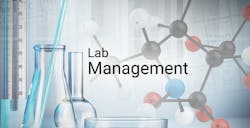The phrase “the Internet of Things” is heard a lot these days. What does this term really mean? How can it be applied to the clinical laboratory, pre-analytics, and especially location and temperature control of samples during transport?
Says Wikipedia: “The Internet of Things (IoT) is the network of physical objects or “things” embedded with electronics, software, sensors and connectivity to enable it to achieve greater value and service by exchanging data with the manufacturer, operator and/or other connected devices. Each thing is uniquely identifiable through its embedded computing system but is able to interoperate within the existing Internet infrastructure.”
What IoT can do for healthcare—including the clinical lab—is build automation into processes that have traditionally been manual. This is important, because manual processes are difficult to track, so it can be a challenge to determine if standard operating procedures (SOPs) are being followed. With a well-designed and deployed IoT system, errors can be quickly discovered and fixed. Driving processes to high-quality levels can lead to dramatically reduced risk of errors that threaten patient safety.
IoT has given clinical laboratories the opportunity to improve the quality of test results through the automation of pre-analytical clinical processes. It is generally accepted that pre-analytical processes are responsible for a significant percentage of clinical laboratory errors. Clinical laboratory sample quality is being improved though the use of IoT technologies. Labs have done a good job of automating clinical sample testing, and they have been working hard on sample collection, labeling and identification issues.
One significant area that IoT is addressing is sample quality during transportation. By placing IoT temperature sensors inside transportation coolers, labs can get real-time data about sample quality and location while in transit. This capability allows management to correct defects in real time, preventing samples from being compromised. By logging into a website, management can assess detailed information on how well the transportation system is working. They can answer questions such as: Are the samples staying within proper temperature profile? Are they being delivered on time to the proper location? Are couriers conforming to SOPs?
The idea of tracking things isn't new. But being able to affordably track, measure, and analyze important parameters is improving the quality of traditionally manual processes and allowclinical laboratories to get closer to the goal of being error-free. A detailed focus on tracking location and temperature of clinical samples can be an important step in decreasing costs and achieving higher levels of quality.

